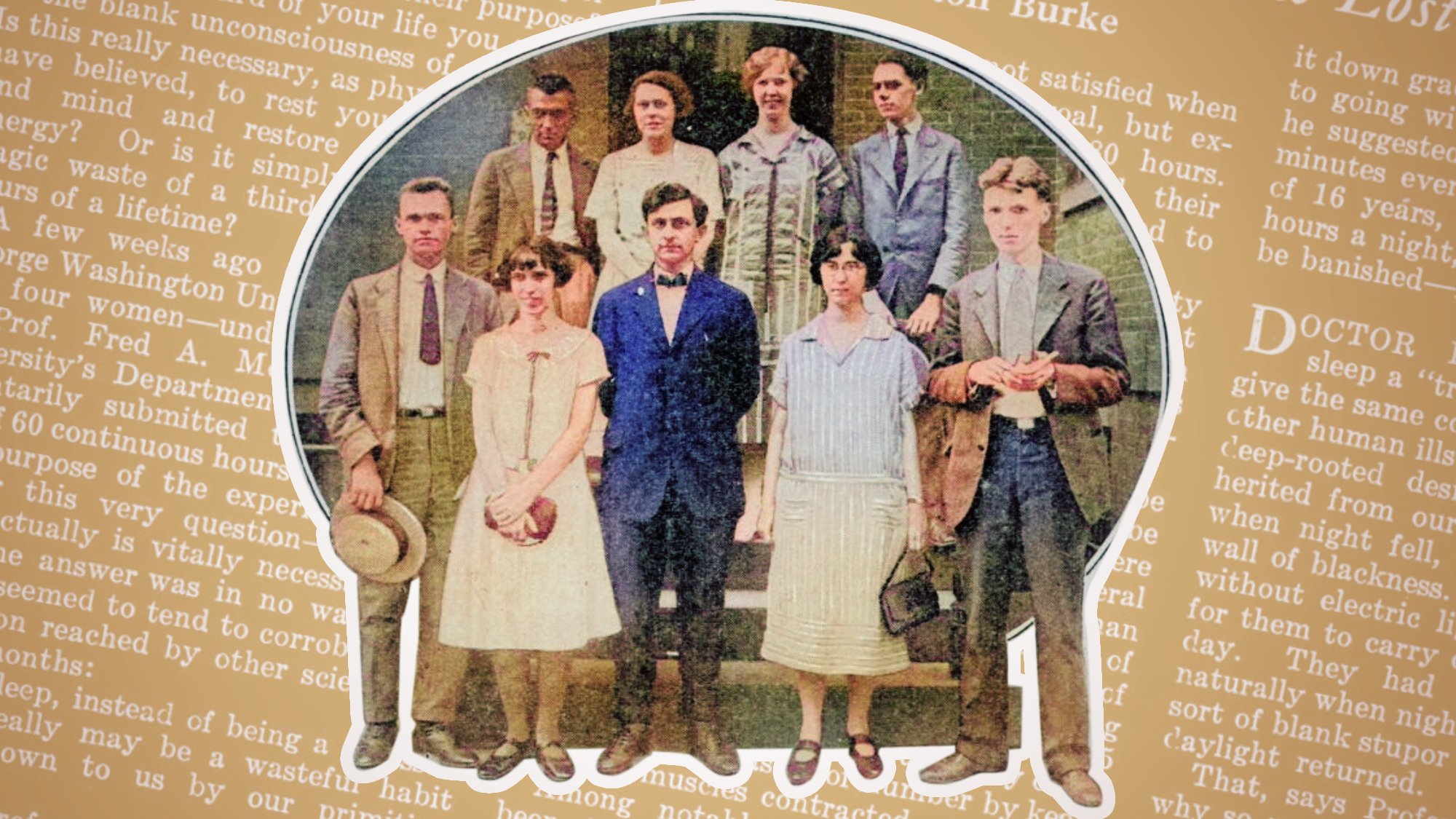In a groundbreaking experiment conducted in November 1925, seven undergraduate students at George Washington University stayed awake for over 60 hours as part of a study on the effects of sleep deprivation. This ambitious undertaking, led by psychology professor Frederick August Moss, aimed to challenge the conventional understanding of sleep and its necessity for human health.
The experiment took place in Foggy Bottom, a vibrant neighborhood in Washington, DC. Moss’s hypothesis was that sleep might be a “tragic waste” of time, and he sought to gather empirical evidence to support this controversial claim. Throughout the duration of the study, Moss monitored the participants’ vital signs, reflexes, and cognitive performance while they engaged in various activities to combat fatigue, including driving through the Virginia countryside and playing baseball.
Among the volunteers were Louise Omwake, a promising student and athlete, and Thelma Hunt, a driven individual aspiring to make her mark in psychology. Both women later achieved significant milestones in their careers; Omwake became a national education leader while Hunt went on to become a psychologist and department chair at GWU.
During the two-and-a-half-day ordeal, the group succeeded in their mission, demonstrating remarkable resilience. According to a report in Popular Science, Moss’s preliminary findings suggested that excessive sleep could be detrimental, akin to overindulgence in alcohol, dulling mental and physical performance.
The 1920s were marked by a growing fascination with the idea of reducing sleep. Influential figures like inventor Thomas Edison famously claimed to thrive on just four hours of sleep each night. Despite this cultural trend, skepticism remained regarding the idea that sleep could be significantly reduced without negative health consequences. Newton Burke, a writer for Popular Science, noted that scientific consensus at the time indicated that sleep is essential for maintaining well-being.
Since then, extensive research has confirmed the critical importance of sleep. Studies have revealed that sleep is an active process crucial for memory consolidation, physical repair, and the detoxification of the brain. The discovery of optogenetics and advanced imaging techniques has allowed scientists to understand sleep’s complex biological functions more deeply.
Today, sleep is recognized not only as vital for health but also as a necessary component of a high quality of life. Recent epidemiological analyses indicate a U-shaped relationship between sleep duration and health outcomes, showing that both insufficient and excessive sleep can lead to increased health risks. For adults, the optimal amount of sleep appears to fall between seven and nine hours per night.
Importantly, while oversleeping may correlate with health issues, it does not necessarily cause them. Instead, prolonged sleep may signal underlying conditions such as chronic illness or mood disorders. Therefore, habitual oversleeping warrants medical evaluation.
Furthermore, research underscores the significance of sleep regularity alongside duration. Maintaining consistent bedtimes and wake times has been linked to improved health outcomes, while irregular sleep patterns may contribute to conditions such as obesity and cardiovascular disease.
Reflecting on the 1925 experiment, it is intriguing to note that none of the students experienced significant difficulty sleeping after their marathon wakefulness. This contrasts with the common belief that prolonged sleep deprivation disrupts the ability to sleep normally afterward.
Over the past century, perspectives on sleep have evolved dramatically. What was once seen as a potential waste of time is now understood to be an essential investment in health, longevity, and overall quality of life. The journey to unravel the mysteries of sleep continues, and the legacy of Moss’s experiment lives on, reminding us of the importance of understanding our biological needs.
